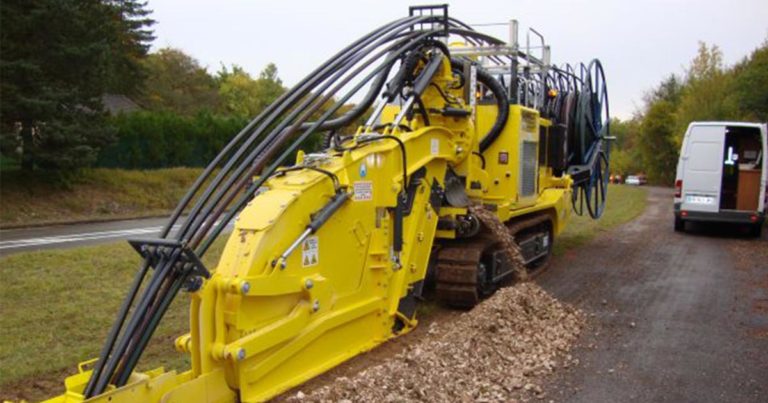The frenetic development of ultra-broadband in France has necessitated the rollout of hundreds of kilometres of protective fibre-optic conduit, which the Public Works companies usually lay with trenchers.
The rollout of the optical fibre networks has called for several hundred kilometres of HDPE protective fibre-optic conduit to be laid.
This protective conduit is usually laid with a trencher for speed.
Trenchers dig the trench, lay the HDPE conduit and do the backfilling in a single integrated operation. Under optimum conditions, companies can lay several hundred metres of network per day using this technique, which is 10 times faster than conventional methods and allows the work to be completed quickly and with minimum disruption for the local inhabitants.
Companies are now offering a range of Flexcom HDPE conduit that is ideally suited to this laying technique:
- The conduit is available in long, compartmentalised lengths, allowing construction companies to use trenchers to lay hundreds of metres of conduit without a single union. This type of packaging also allows for complete optical fibre clusters to be laid directly in trenches.
- The RC Prolinear HDPE range of pipes can also increase the speed of laying as it allows the earth from the construction site to be used directly as infill, without the need for sand filler. Trencher operating speed is not therefore hampered by having to wait for fine grain material to be deposited before the trench can be closed. This technique has been used many times and has been particularly well received by the companies using it.
The trencher technique is the most widely used in optical fibre deployment.
GO
